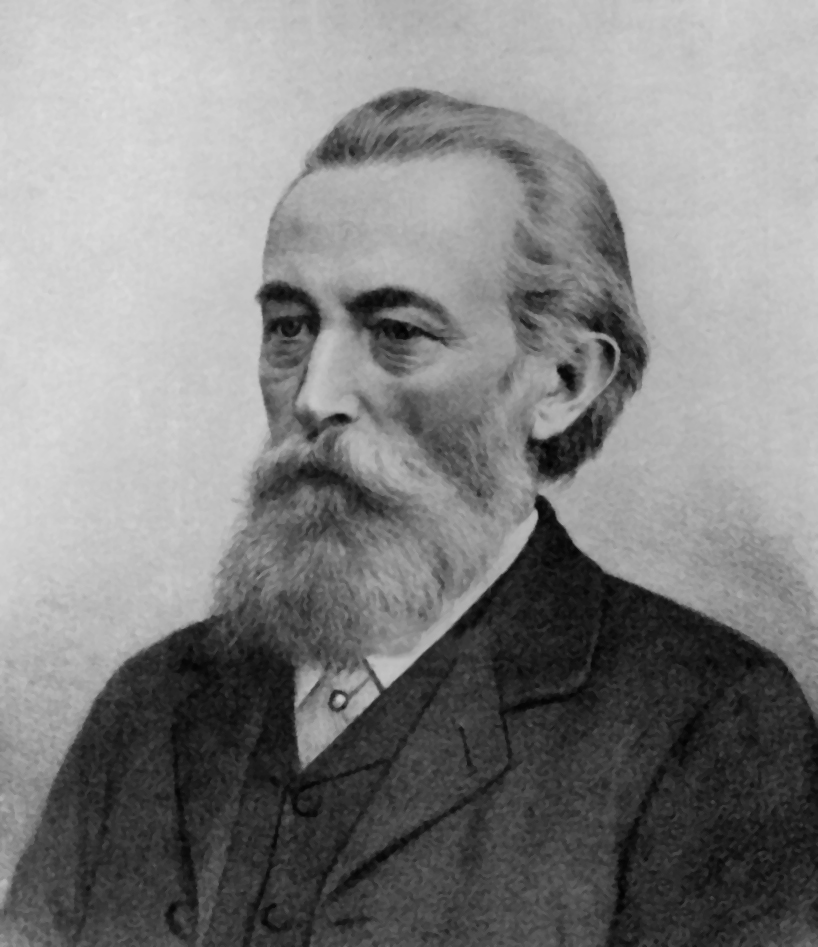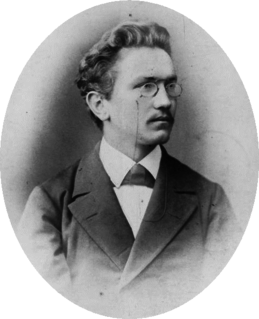
Robert Fuchs was an Austrian composer and music teacher. As Professor of music theory at the Vienna Conservatory, Fuchs taught many notable composers, while he was himself a highly regarded composer in his lifetime.
Franz Xaver Scharwenka was a German pianist, composer and teacher of Bohemian-Polish descent. He was the brother of Ludwig Philipp Scharwenka (1847–1917), who was also a composer and teacher of music.

Lucien Denis Gabriel Albéric Magnard was a French composer, sometimes referred to as a "French Bruckner", though there are significant differences between the two composers. Magnard became a national hero in 1914 when he refused to surrender his property to German invaders and died defending it.

Hans Huber was a composer from Switzerland who, between 1894 and 1918, composed five operas. His piano concertos are slightly unusual for the form in that they have, like Brahms' second piano concerto in B-flat major, four movements. He also wrote a set of 24 Preludes and Fugues, Op. 100, for piano four-hands in all the keys.
The violin sonata no. 1 in A minor, opus 105 of Robert Schumann was written the week of September 12– 16 September 1851. Schumann was reported to have expressed displeasure with the work. This was also the year of the premiere of the Rhenish symphony, and among compositions the substantial revision of the fourth symphony, the third piano trio, the oratorio Der Rose Pilgerfahrt, a number of piano works and two of his concert overtures, Julius Caesar and Hermann und Dorothea after Goethe.

Friedrich Gernsheim was a German composer, conductor and pianist.

Bernhard Molique was a German violinist and composer.

Issay Alexandrovich Dobrowen, born Itschok Zorachovitch Barabeitchik, was a Russian/Soviet-Norwegian pianist, composer and conductor. He left the Soviet Union in 1922 and became a Norwegian citizen in 1929.

Louis Théodore Gouvy was a French/German composer.
Ludvig Norman was a Swedish composer, conductor, pianist, and music teacher. Together with Franz Berwald and Adolf Fredrik Lindblad, he ranks among the most important Swedish symphonists of the 19th century.

Eyvind Alnæs was a Norwegian composer, pianist, organist and choir director.
Ludwig Milde is known primarily as a composer of music for the bassoon. In particular, his 25 Studies in Scales and Chords and his 50 Concert Studies are widely played to this day.

Karl Graedener was a German composer.
Hermann Bischoff was a German composer of classical music.

Prince Heinrich XXIV Reuss of Köstritz, also Prince Heinrich XXIV Reuss, Younger Line was a German composer.
Emil Anton Joseph Friedrich Kreuz, also known as Emil Frederick Thornfield, was a German violinist, violist, teacher, conductor and composer.
Ewald Straesser (Sträßer) was a German composer of classical music.
Émile Pierre Ratez was a French composer, administrator and violist.

Daniel Coit Gilman was an American educator and academic. Gilman was instrumental in founding the Sheffield Scientific School at Yale College, and subsequently served as the third president of the University of California, as the first president of Johns Hopkins University, and as founding president of the Carnegie Institution. He was also co-founder of the Russell Trust Association, which administers the business affairs of Yale's Skull and Bones society. Gilman served for twenty five years as president of Johns Hopkins; his inauguration in 1876 has been said to mark "the starting point of postgraduate education in the U.S."

The New International Encyclopedia was an American encyclopedia first published in 1902 by Dodd, Mead and Company. It descended from the International Cyclopaedia (1884) and was updated in 1906, 1914 and 1926.
Sterling Records is a classical music record label, specializing in releasing world premiere recordings of the orchestral work of romantic composers.














